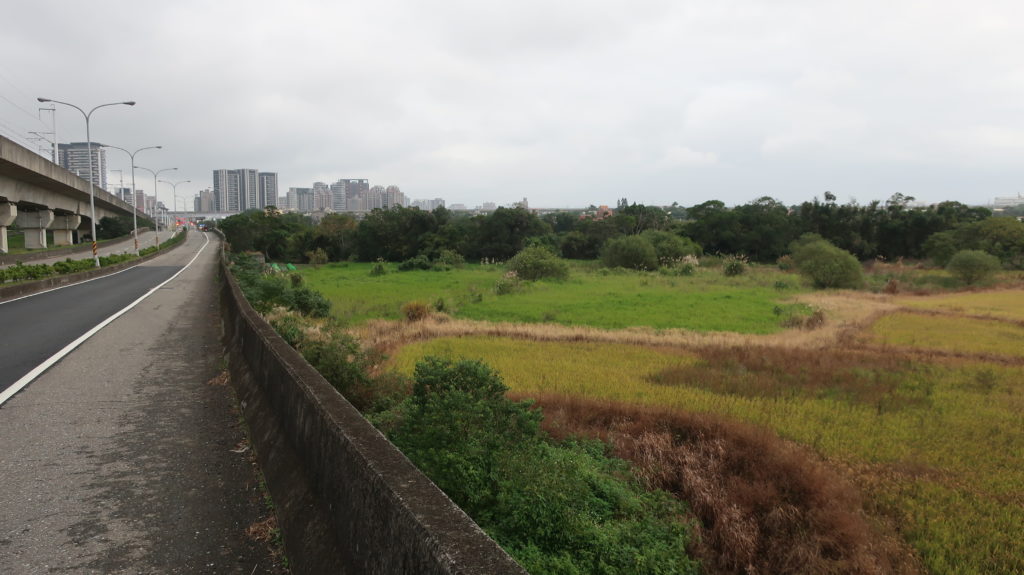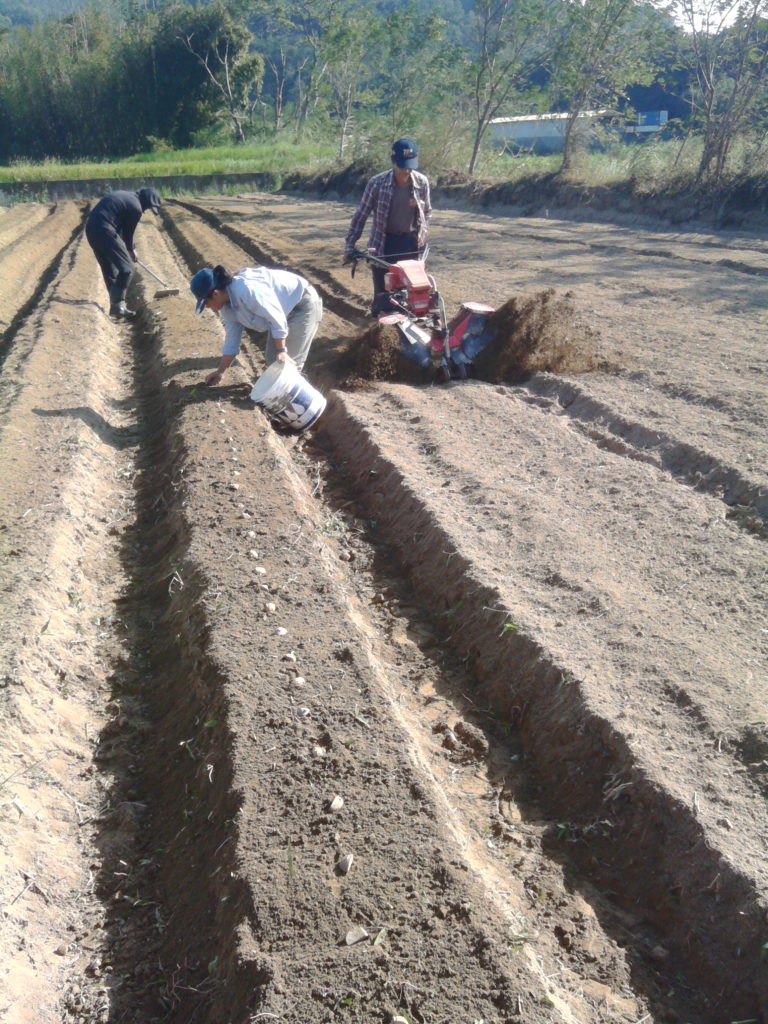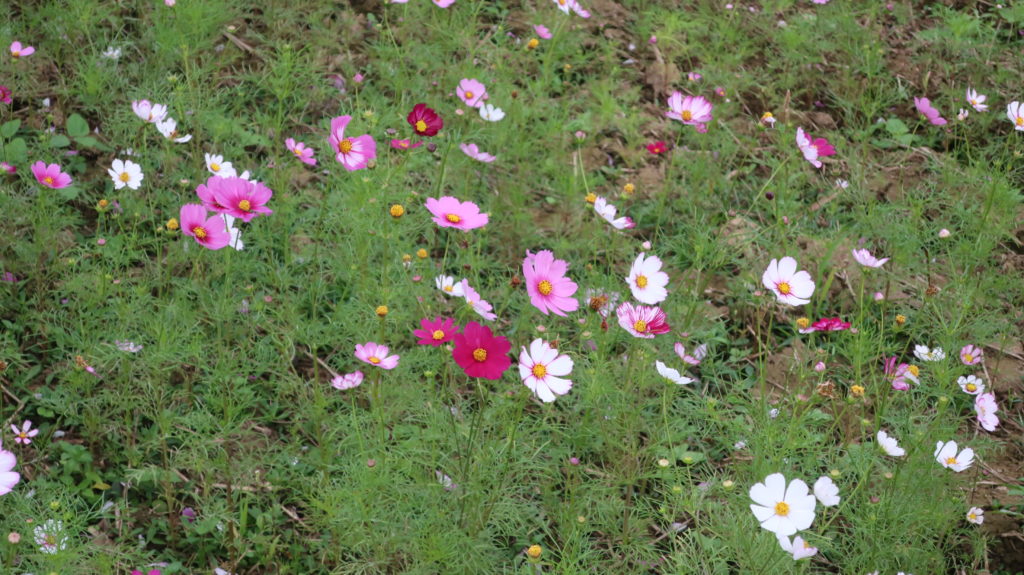Green manure in Taiwan
28 November 2019
In the cool windy weather of this late November, I finally straddle my bicycle (thanks a lot to a friendly farmer from Hsinchu county for lending me such a quality bike!), and am ready for my first trip of this journey.

During this first stage, I crossed the 40 kilometers between the densely populated urban areas of Hsinchu and Taoyuan, and arrived in Chungli. My path went through one of the last major agricultural areas in northern Taiwan.

At that time of the year, most of the paddy fields have already been harvested and are not flooded anymore, however I barely saw any empty fields. Indeed, most of Taiwan’s agriculture departments have been promoting the use of green manures. But what are green manures ? They are plants that farmers sow and let grow, and then do not get harvested… What a waste, wouldn’t you say ?
However this practice is quite common and well-accepted in Taiwan, at least in paddy fields. Indeed, winters are too cool (in northern Taiwan) or too dry (in southern Taiwan) to grow rice. Some of the farmers use this timeframe to grow other crops well-adapted to the season, like cabbages, potatoes, or even ornamental flowers. But for most of rice growers, it is quite challenging to diversify their production, therefore green manures do not compete with economic crops.

The agronomic benefits of green manures come from the fact that they do not leave a bare soil, and as french agronomist Konrad Schreiber would say, “Bare soil is dead soil !”. Indeed, the cover of vegetation allows for :
- Catching sunlight and, through photosynthesis, stocking carbon in the cover biomass.
- Boosting the nutrient cycle, absorbing nitrogen which would have otherwise be leached by rainfall and then would have polluted streams and underground water. All of the nutrients necessary for plant growth are also recycled, because they are absorbed by the green manure during its growth.
- Enhancing the soil biological activity, by providing “board and lodging”, which means food and habitat, to micro- and macro-organisms by the accumulation of organic litter (leaves, stalks) on the soil surface, and through the root system( 1). This effect goes hand-in-hand with an increase in the soil organic matter content (SOM), and in porosity (better soil structure). All these factors are necessary for a healthy soil.
- Supporting more biodiversity than a naked field, also by providing “board and lodging”. For example, one can think about all the pollinating insects which come to feed on nectar and pollen when green manures are in bloom.
- Controling the growth of weeds, by competing indirectly (for space, light, water, nutrients) and/or directly (through allelopathy ( 2)) with them.
There are countless plant species that could be use as green manure, including many weeds. However the choice will be restricted by many factors : climate, season, soil type, crops preceding and succeding the green manure, time available for the green manure growth, price and availability of seeds, how the green manure can be destroyed before the next crop…
For example, plants from the Fabaceae family (the legume family) are able to fix the nitrogen in the atmosphere, through a symbiosis with bacterium in their roots. So using them as green manure will increase the nitrogen content in the soil, which can be useful for demanding crops, especially in organic farming where chemical fertilizers are not allowed.
The green manure then have to be destroyed, to cultivate the next crop. Depending on the situation, the farmer can flatten (with a roller-crimper), mow, crush, directly bury, or use a herbicide on the green manure. In Taiwan, rice growers generally prefer to use green manure that do not get too tall that they can directly bury. They do so while the plants are still quite green and rich in nitrogen, so that they decompose quickly, and then the farmers can begin all the labor necessary to establish the paddy field (which we’ll see in another future article).
This way of using green manures will lessen some advantages we talked about previously. For example, burying green manure while it is young and tender will increase the soil organic matter content only quite temporarily, because it will quickly deteriorate. Also, the intense soil perturbations and flooding, necessary in the traditional way of establishing paddy fields, negates all the benefits given to the soil structure and partly to its biological activity.
The two most common species used as green manure in paddy fields that I crossed are :


In Taiwan, other species often used as green manure are : different species of mustard (mostly the brown mustard Brassica juncea, really efficient at trapping nitrates), sunflower Helianthus annuus, sesbania Sesbania cannabina (a legume which behaves quite like Sunn hemp)…
Green manures are often cultivated in a monospecific way to make the job easier, however it is possible to diversify and mix the species in infinitely many ways in order to amplify the benefits, as often seen in conservation agriculture, regenerative agriculture and permaculture. But it is a vast subject, deserving of its own article !
No matter in which climate, green manures are interesting tools to keep a healthy soil, and while they can be quite complex to implement in some situations, they should be taken into consideration by every farmers.
See you soon for more agroecology !


Notes :
(1) Through rhizodeposition, which comes from the shedding of fine roots and root hair as they die in the course of the plant growth, and from root exudates, which are molecules (mostly polysaccharides) secreted at the roots tip, with diverse roles. (return to text)
(2) Allelopathy is the secretion of molecules which impact, generally negatively, the germination, growth and survival of other plants. (return to text)
